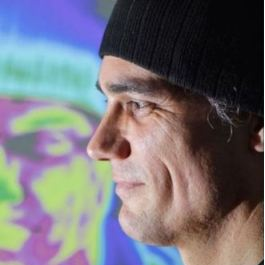Medical Image Understanding and Analysis 2018
A special issue of Journal of Imaging (ISSN 2313-433X).
Deadline for manuscript submissions: closed (30 November 2018) | Viewed by 55281
Special Issue Editors
Interests: signal and image processing; computer vision; segmentation; biometrics; medical image understanding
Interests: computer vision; biometrics; medical image understanding
Special Issue Information
Dear Colleagues,
Medical Image Understanding and Analysis (MIUA) is a UK-based meeting for the communication of research related to image processing and analysis and its application to medical imaging and biomedicine. The conference provides an opportunity to present and discuss research in medical image understanding and analysis, which is a rapidly growing subject with ever increasing real-world applicability.
For its 22nd anniversary, the Medical Image Understanding and Analysis Conference—MIUA 2018—is returning to England, with its first visit to Southampton (https://miua2018.soton.ac.uk/).
The meetings are designed for the dissemination and discussion of research in medical image understanding and analysis, and aims to encourage the growth and raise the profile of this multi-disciplinary field by bringing together the various communities including among others:
- Body imaging
- Brain imaging
- Magnetic Resonance Imaging (structural, diffusion and functional)
- Optical Imaging
- Positron Emission Imaging
- Computed Tomography
- X-Ray imaging
- Ultrasound Imaging
- Microscopy
Dr. Sasan Mahmoodi
Prof. Dr. Mark Nixon
Prof. Dr. Reyer Zwiggelaar
Guest Editors
Manuscript Submission Information
Manuscripts should be submitted online at www.mdpi.com by registering and logging in to this website. Once you are registered, click here to go to the submission form. Manuscripts can be submitted until the deadline. All submissions that pass pre-check are peer-reviewed. Accepted papers will be published continuously in the journal (as soon as accepted) and will be listed together on the special issue website. Research articles, review articles as well as short communications are invited. For planned papers, a title and short abstract (about 100 words) can be sent to the Editorial Office for announcement on this website.
Submitted manuscripts should not have been published previously, nor be under consideration for publication elsewhere (except conference proceedings papers). All manuscripts are thoroughly refereed through a single-blind peer-review process. A guide for authors and other relevant information for submission of manuscripts is available on the Instructions for Authors page. Journal of Imaging is an international peer-reviewed open access monthly journal published by MDPI.
Please visit the Instructions for Authors page before submitting a manuscript. The Article Processing Charge (APC) for publication in this open access journal is 1800 CHF (Swiss Francs). Submitted papers should be well formatted and use good English. Authors may use MDPI's English editing service prior to publication or during author revisions.
Keywords
- Medical Image Analysis
- Machine Learning
- Magnetic Resonance Imaging
- Microscopy
- Deep Learning
- Image Registration and Segmentation
- Pattern Recognition
- Motion Analysis
- Texture Analysis
- Visualisation
- Image Interpretation







